 Facebook
Facebook
 X
X
 Instagram
Instagram
 TikTok
TikTok
 Youtube
Youtube

Since early 2009, the American stock market has more than doubled while the economy has crawled up by about 2 percent. Bad economic news is good market news. Sequester? Stocks zoomed right past it. Europe is in recession; its stocks have been soaring. Japan has suffered deflation for 15 years; stocks have been climbing recently. Greece is Europe’s worst economic basket case, but its stock market zoomed 33 percent last year.
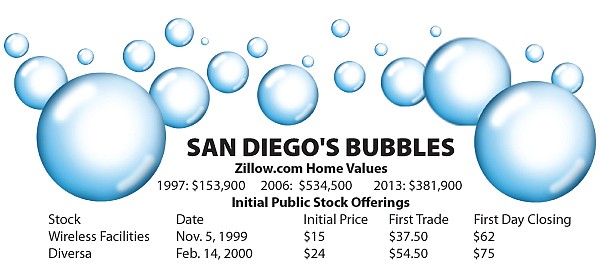
What’s going on? The United States Federal Reserve, our central bank, has put interest rates at record low levels and says it will keep them there until unemployment improves. Other central banks in the world are taking similar steps. In short, they are all printing gobs of money. That money is not improving economies very much but is lifting stock markets. It sounds counterintuitive, but it really isn’t. Sad but true, Wall Street is thriving because Main Street is hurting, and other industrial countries have the same disease.
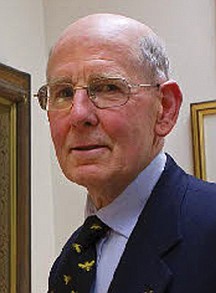
Springfield, New Jersey–based economist A. Gary Shilling calls the phenomenon “the Great Disconnect — the vast gulf between the economies around the world that are growing anemically at best and investors who couldn’t care less as long as central banks are shoving liquidity out the door.”
But history tells us that central banks can’t print money indefinitely. Lots of things can happen, and inflation is just one of them. Now, economies are so weak that companies can’t raise prices, despite all that money floating around. Some members of the United States central bank warn that when money is so easy to come by, investors start doing stupid things, like pouring money into junk bonds or real estate speculation.
Easy money begets bubbles, and bubbles beget trouble. Financial bubbles have caused havoc since the late 1990s. The bubble in tech stocks (particularly dot-coms) was a precursor of the 2000–2002 downturn and bear market. Then, beginning in 2007, throughout 2008, and into early 2009, the bursting of the real estate bubble brought on an economic collapse from which we are barely recovering now.
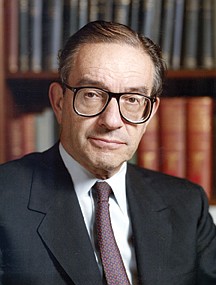
What’s scary is that in both of those crashes, our Federal Reserve did nothing. In fact, Alan Greenspan, who was in charge during the buildup to the first collapse, declared that economists cannot detect a bubble until after it has burst. He argued that addressing stock-market distortions is not part of the Fed’s mandate. But he made a liar of himself by pumping out money in 1987 when stocks suddenly went down, upsetting Wall Street. When stocks went up irrationally in the late 1990s, he stood idly by — and ultimately, of course, they crashed. The Dow Jones Industrial Average dropped 49 percent and the Nasdaq, where most major San Diego stocks trade, plummeted 79 percent.
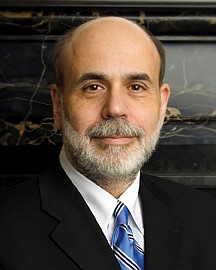
The Fed is now headed by Ben Bernanke. In 2002, he stated in a speech, “The Fed cannot reliably identify bubbles in asset prices.” Before the 2008 crash, he insisted that there was no real estate bubble. In November of 2005, economists Dean Baker and David Rosnick (in a paper called “Will a Bursting Bubble Trouble Bernanke?”) made a prescient prediction: the housing bubble was around the corner. Home sale prices were rising far more sharply than rents; home construction was ahead of itself; the savings rate was down.
Bernanke blew it completely, while Baker and Rosnick were correct. There was not only a bubble — there was a colossal bubble.
If only Greenspan had visited San Diego in the late 1990s and Bernanke had stopped by sometime before 2007–2008.
One of the big money machines of the 1990s tech bubble was the initial public offering, or a company issuing stock for the first time. If Greenspan had just seen some San Diego new issues: Wireless Facilities went public on November 5, 1999, at $15 a share; the first trade was at $37.50, and the stock closed the day at $62. Diversa went public on February 14, 2000, at $24; the first trade was at $54.50, and the closing price $75. Websense went public March 28, 2000, at $18; the first trade was $34.50, and the closing price the first day was $47.75. Onetime online-music wunderkind MP3.com went public July 21, 1999; the initial price was $28, and the first trade was $92.
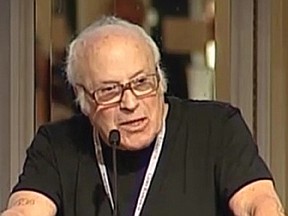
This is not how a rational market operates. It was strictly gambling. This is not investing, and it has nothing to do with the allocation of capital, which, after all, is supposed to be the purpose of Wall Street. And Alan Greenspan didn’t see a bubble? At the time, Richard Russell of La Jolla’s Dow Theory Letters declared the dot-com phenomenon to be one of the biggest bubbles in history.
Bernanke should have visited San Diego to learn what a housing bubble was all about. For example, researchers Baker and Rosnick stated in their 2005 warning report, “In the last eight years, [national] house sale prices have risen by 55 percent, after adjusting for inflation.” There was no precedent for this run-up because home prices normally rise with inflation, they said.
But San Diego made those national figures look piddly. Over the same eight years, the Zillow.com home-value index for San Diego soared from $153,900 to $525,100. Those home values continued rising until February of 2006, when they topped out at $534,500. Then the bubble burst, and they hit $352,100 in April of 2009. Now they are back at $381,900.
Greenspan actually hinted of a stock-market bubble in 1996, then backed down and fed it with more easy money until the crash. Now, many think Bernanke’s extremely easy money policy will create another housing or stock-market bubble. He doesn’t see it, and frankly, neither do I at this point, but some kind of unhappy result of this madcap money printing is inevitable. As Aldous Huxley once pointed out, “That men do not learn from the lessons of history is the most important of all the lessons of history.”


Since early 2009, the American stock market has more than doubled while the economy has crawled up by about 2 percent. Bad economic news is good market news. Sequester? Stocks zoomed right past it. Europe is in recession; its stocks have been soaring. Japan has suffered deflation for 15 years; stocks have been climbing recently. Greece is Europe’s worst economic basket case, but its stock market zoomed 33 percent last year.

What’s going on? The United States Federal Reserve, our central bank, has put interest rates at record low levels and says it will keep them there until unemployment improves. Other central banks in the world are taking similar steps. In short, they are all printing gobs of money. That money is not improving economies very much but is lifting stock markets. It sounds counterintuitive, but it really isn’t. Sad but true, Wall Street is thriving because Main Street is hurting, and other industrial countries have the same disease.

Springfield, New Jersey–based economist A. Gary Shilling calls the phenomenon “the Great Disconnect — the vast gulf between the economies around the world that are growing anemically at best and investors who couldn’t care less as long as central banks are shoving liquidity out the door.”
But history tells us that central banks can’t print money indefinitely. Lots of things can happen, and inflation is just one of them. Now, economies are so weak that companies can’t raise prices, despite all that money floating around. Some members of the United States central bank warn that when money is so easy to come by, investors start doing stupid things, like pouring money into junk bonds or real estate speculation.
Easy money begets bubbles, and bubbles beget trouble. Financial bubbles have caused havoc since the late 1990s. The bubble in tech stocks (particularly dot-coms) was a precursor of the 2000–2002 downturn and bear market. Then, beginning in 2007, throughout 2008, and into early 2009, the bursting of the real estate bubble brought on an economic collapse from which we are barely recovering now.

What’s scary is that in both of those crashes, our Federal Reserve did nothing. In fact, Alan Greenspan, who was in charge during the buildup to the first collapse, declared that economists cannot detect a bubble until after it has burst. He argued that addressing stock-market distortions is not part of the Fed’s mandate. But he made a liar of himself by pumping out money in 1987 when stocks suddenly went down, upsetting Wall Street. When stocks went up irrationally in the late 1990s, he stood idly by — and ultimately, of course, they crashed. The Dow Jones Industrial Average dropped 49 percent and the Nasdaq, where most major San Diego stocks trade, plummeted 79 percent.

The Fed is now headed by Ben Bernanke. In 2002, he stated in a speech, “The Fed cannot reliably identify bubbles in asset prices.” Before the 2008 crash, he insisted that there was no real estate bubble. In November of 2005, economists Dean Baker and David Rosnick (in a paper called “Will a Bursting Bubble Trouble Bernanke?”) made a prescient prediction: the housing bubble was around the corner. Home sale prices were rising far more sharply than rents; home construction was ahead of itself; the savings rate was down.
Bernanke blew it completely, while Baker and Rosnick were correct. There was not only a bubble — there was a colossal bubble.
If only Greenspan had visited San Diego in the late 1990s and Bernanke had stopped by sometime before 2007–2008.
One of the big money machines of the 1990s tech bubble was the initial public offering, or a company issuing stock for the first time. If Greenspan had just seen some San Diego new issues: Wireless Facilities went public on November 5, 1999, at $15 a share; the first trade was at $37.50, and the stock closed the day at $62. Diversa went public on February 14, 2000, at $24; the first trade was at $54.50, and the closing price $75. Websense went public March 28, 2000, at $18; the first trade was $34.50, and the closing price the first day was $47.75. Onetime online-music wunderkind MP3.com went public July 21, 1999; the initial price was $28, and the first trade was $92.

This is not how a rational market operates. It was strictly gambling. This is not investing, and it has nothing to do with the allocation of capital, which, after all, is supposed to be the purpose of Wall Street. And Alan Greenspan didn’t see a bubble? At the time, Richard Russell of La Jolla’s Dow Theory Letters declared the dot-com phenomenon to be one of the biggest bubbles in history.
Bernanke should have visited San Diego to learn what a housing bubble was all about. For example, researchers Baker and Rosnick stated in their 2005 warning report, “In the last eight years, [national] house sale prices have risen by 55 percent, after adjusting for inflation.” There was no precedent for this run-up because home prices normally rise with inflation, they said.
But San Diego made those national figures look piddly. Over the same eight years, the Zillow.com home-value index for San Diego soared from $153,900 to $525,100. Those home values continued rising until February of 2006, when they topped out at $534,500. Then the bubble burst, and they hit $352,100 in April of 2009. Now they are back at $381,900.
Greenspan actually hinted of a stock-market bubble in 1996, then backed down and fed it with more easy money until the crash. Now, many think Bernanke’s extremely easy money policy will create another housing or stock-market bubble. He doesn’t see it, and frankly, neither do I at this point, but some kind of unhappy result of this madcap money printing is inevitable. As Aldous Huxley once pointed out, “That men do not learn from the lessons of history is the most important of all the lessons of history.”
Comments